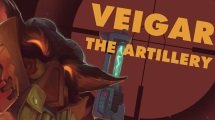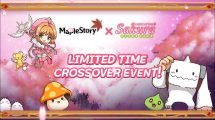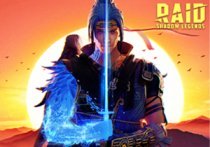Streets of Red: Devil’s Dare Deluxe Review!
Secret Base launched its arcade brawler Devil’s Dare in October of 2014. Now, in 2018, they’ve decided to revisit the project with Streets of Red: Devil’s Dare Deluxe. The game launched yesterday, April 12th, and the folks over at Secret Base were kind enough to send me a code for the Nintendo Switch version.
Think back, for a moment, to the golden age of the Arcade. Remember pumping tons of quarters into classics like Double Dragon, Teenage Mutant Ninja Turtles, and X-Men? I certainly do. In fact, I spent over 20 dollars in one sitting on a TMNT machine once when I was 8. Still didn’t beat it. This is mostly because those games were, by design, very difficult. The difficulty of most arcade games, beat-‘em-ups especially, is engineered to get you feeding quarters into the machine for that one more try. If I just spend one more quarter, I know I can beat Shredder. This is the thought process these machines have been using to coax change out of you for decades.
Well, if what machines like The Simpsons arcade game and Battletoads were “gently coaxing” quarters out of you, then it’s a good thing the Switch and PS4 don’t run on quarters; if they did, Streets of Red would be slamming you into a locker and straight-up taking your lunch money. One of Streets of Red’s selling points is the difficulty; the game is meant to invoke the challenge of old-school arcade games and it does so effortlessly. In fact, the game has a “perma-death” feature that recreates the feeling of watching that Continue screen tick down to zero when you run out of cash. If you run out of cash in the game and die, your entire save file is deleted.
It may seem daunting at first, but the frustration from deaths in the game is quickly washed away by how fun the actual gameplay is. You begin the game as one of four Benny Arcade Expo attendees, each with their own weapon and playstyle.
Axel wields the Master Sword, Hero’s Shield, and the Hookshot, and plays a lot like Link does in Super Smash Bros. In fact, all of the characters have access to a Smash Bros.-esque dodge roll technique that can make you invulnerable in exchange for some of your special meter. Jackson is a teen ninja that wields a pair of sai; he handles almost identically to Raph from the TMNT arcade games, right down to having a near identical basic combo. Queenie is a hybrid take on Tron Bonne from Mega Man and Terra with her Magiteck armor from Final Fantasy VI. Kingston, also known as Fat Shovel, is Arthur from the Ghosts and Goblins series, all the way down to losing all his armor and clothes when hit. The two unlockable characters, Anthony and Jonathan, play like the two main characters of Contra with different guns equipped; one wielding a shotgun, the other a machine gun.
Each member of the cast also has their own set of special moves, also arranged like Super Smash on a special button. There’s a neutral special, which is usually an AoE, a ranging side special, and a defensive vertical special. Each character’s moves are set around a different playstyle, but all of them contribute to executing huge combos and finishing moves.
Learning to get good at these combos and executing huge finishing moves is where the game really shines. Streets of Red allows for massive juggling and wall-bouncing opportunities as well as dodge cancelling and special cancelling for added finesse. Executing special moves on enemies with the “Finish Him” prompt causes them to explode and drop money, which you’ll need to progress.
There are moments when the number of enemies on screen can get uncomfortable, and not just because some of them are pregnant zombies shooting fetuses at you. Getting hit by one enemy can result in being juggled for more than half your life. This puts a huge emphasis on learning how and when to dodge, and taking advantage of moves that hit more than one enemy at a time.
Streets of Red rewards this skill and combo heavy strategy heavily. If you can pull off a Massacre, which happens when you land a finishing move on three or more enemies within a short window, you’ll gain extra money and a health drop item. The quality of the health pickup increases with the number of enemies caught in the Massacre. My personal best is six right now, which dropped a Turkey good for 60 HP, which by this game’s standards is huge.
Granted you can provide your characters with stat boosts at the end of each stage. Once you’ve downed the boss of a given stage, you’ll be presented with four random purchase options. These are things that can increase the damage of your basic combos, upgrade the effects of special moves, up your max HP, and more. You only get to choose one per stage cleared though, and you’ll need gold to unlock certain elements of the game’s story, so make your choices wisely.
If you really want to play with the game’s idea of risk and reward, you can play through the game in Bet mode. Bet mode functions a lot like Skulls in Halo. Taking on a bet means added risk, but the potential for rewards. The bets range from some smaller enemies possibly becoming elites to the biggest bet meaning tons of elite monsters and an elite boss to deal with. The rewards are more cash, but you’ll have to stay alive to really reap the benefits as taking on bets also increase the cost of reviving.
Another thing that really struck a chord with me was just how much this game knows and acknowledges its roots. In fact, there are so many references and nods to gaming culture at large that it would take more than one video to catalog them all. A few of my favorites include the Jason parody boss wielding Cloud’s Buster Sword complete with cross-slash animation, the Sewer level select image being an obvious homage to the intro screen of Teenage Mutant Ninja Turtles, and the fact that Jim Sterling, one of my personal favorite YouTubers, is a boss in the game.
Honestly, the game is so much a love letter to games past that if it weren’t for the fact that zombies are everywhere I’d forget it was technically a horror game. The effort that’s been put in and the love for arcade gaming that flows through it is so well executed that it feels like it could have been coupled with just about any theme and it would have worked as well.
The fact that it’s a horror game does work against the game in some departments though; mostly in the way of the game’s visual design. The game’s pixel-art is great, and the character designs are awesome. It all still manages to bleed together though as the game only really uses tones of peach, red, brown and black. It’s almost monochromatic in this way, and it’s really a shame. Everything pops, but the monotonous color palette becomes a bit boring by the end of the game. I’d love to see Secret Boss games apply the arcade formula they’ve laid out with this game and apply it to something a bit more colorful, but that’s just me.
Another place where the game falls a bit short is in the audio design. The default levels put voice clips over everything else which only serves to bury the music which is quite good. This is worsened by the fact that characters only have two voice lines for each action; some of these lines you’ll be hearing so many times in rapid succession that it’s enough to make you want to rip your ears off. Secret Base is a small game studio, and I totally understand that time in a recording facility is expensive. Still, I’d have loved just one or two more lines for each character so I’m not having to listen to “Money makes the world go round!” spouted every time I do something even remotely noteworty.
Possibly the game’s biggest flaw is in the balancing, although this really only applies to the final boss. His attack patterns are easy enough to figure out, but the window for response is so small and some of his attacks are so wide reaching that it can become incredibly frustrating very quickly. Even this doesn’t hurt the overall game too much, because finally mastering those patterns and finally defeating the boss is especially gratifying. In one of my playthroughs while writing this review, I actually made it to the final boss with only one death, and runs like that are when Streets of Red is at its most fun.
Streets of Red features local co-op in all versions, but no online play. It’s kind of a shame to not see online coop, but the introduction of delays would only make an already difficult game even harder. The Switch version is where the local co-op is best though, because the two joycons included with the system are all you need for you and a friend to play wherever you are. If you have pro controllers or more joycons you can get up to four players at once. The game scales difficulty with the number of players though, so it might be a good idea to bring your dock with you. Four people trying to play in tablet mode might be a bit too hard.
All told, Streets of Red: Devil’s Dare Deluxe is a must-own arcade brawler no matter what system you own. The variety of playstyles amongst its cast, fun boss fights (well except that last one, really), four player cooperative play, and a litany of gags, goofs, and subtle references to arcade hits of the past mean that even with its flaws, there’s still hours of fun to be had and a ton of replayability as well. The bottom line is that Streets of Red: Devil’s Dare Deluxe is incredible and it’s well worth the $8.99 it costs. I give Streets of Red an 8 out of 10.
Videos You May Enjoy
Articles You May Enjoy
- Space Wars: Interstellar Empires Aims for Steam Early Access
- Space Wars: Interstellar Empires, the turn-based/real-time hybrid strategy MMO is coming to Steam Early Access!
- Monster Super League Mobile Review
- 4:33 Creative Labs is at it again with a free-to-play squad based unit collecting mobile game, Monster Super League.
- Pokemon Go ComicCon Panel Reveals Future Details
- Pokemon Go future development plans confirmed at ComicCon.











